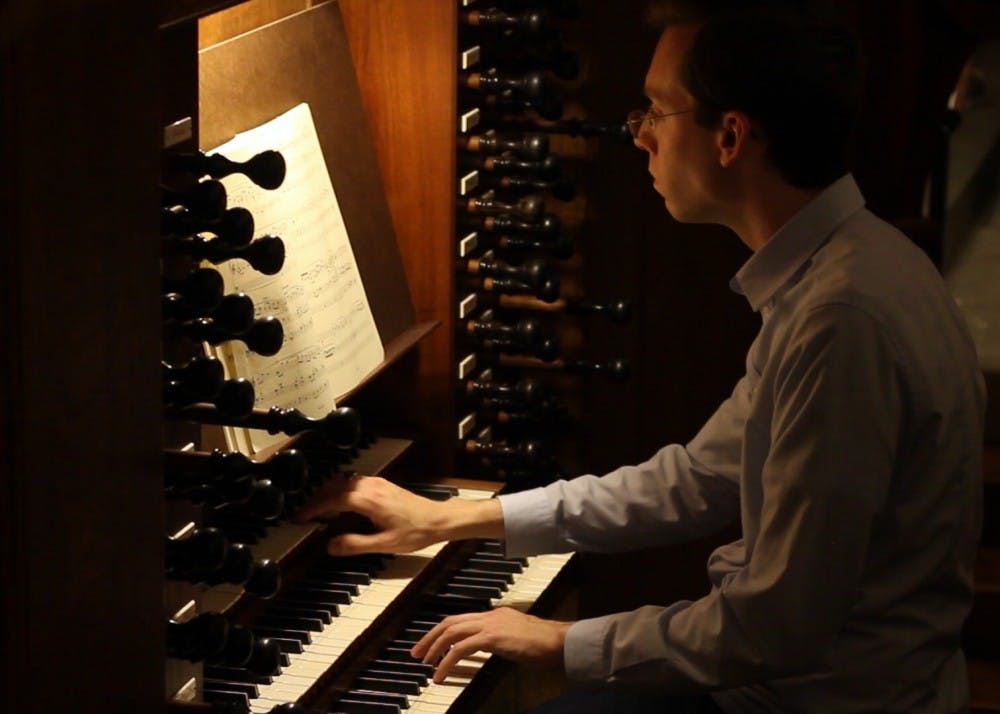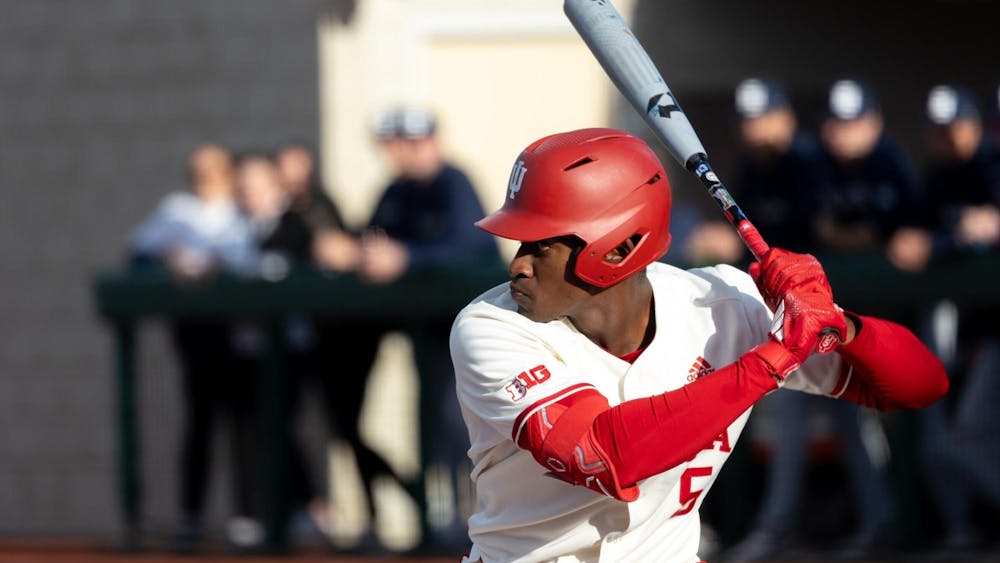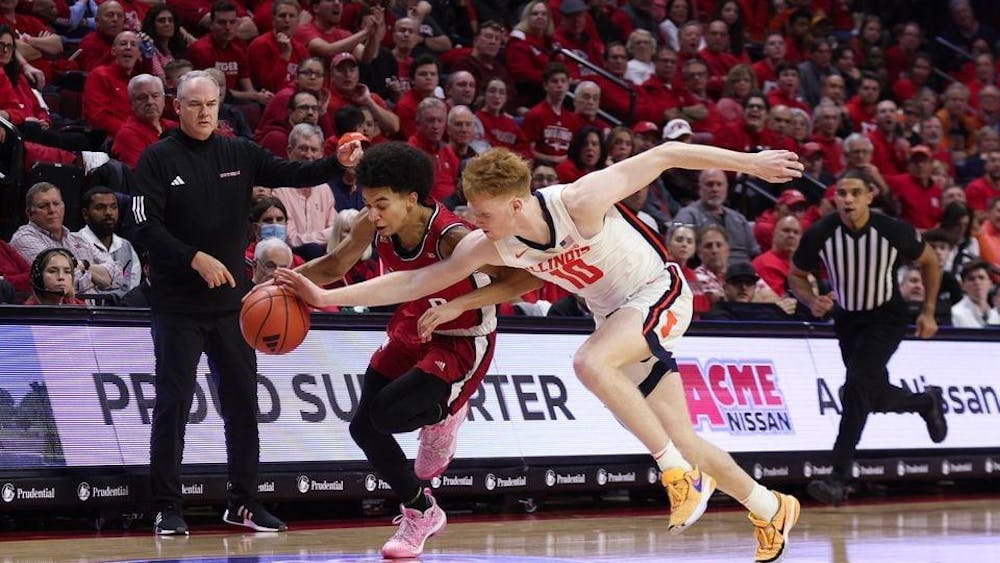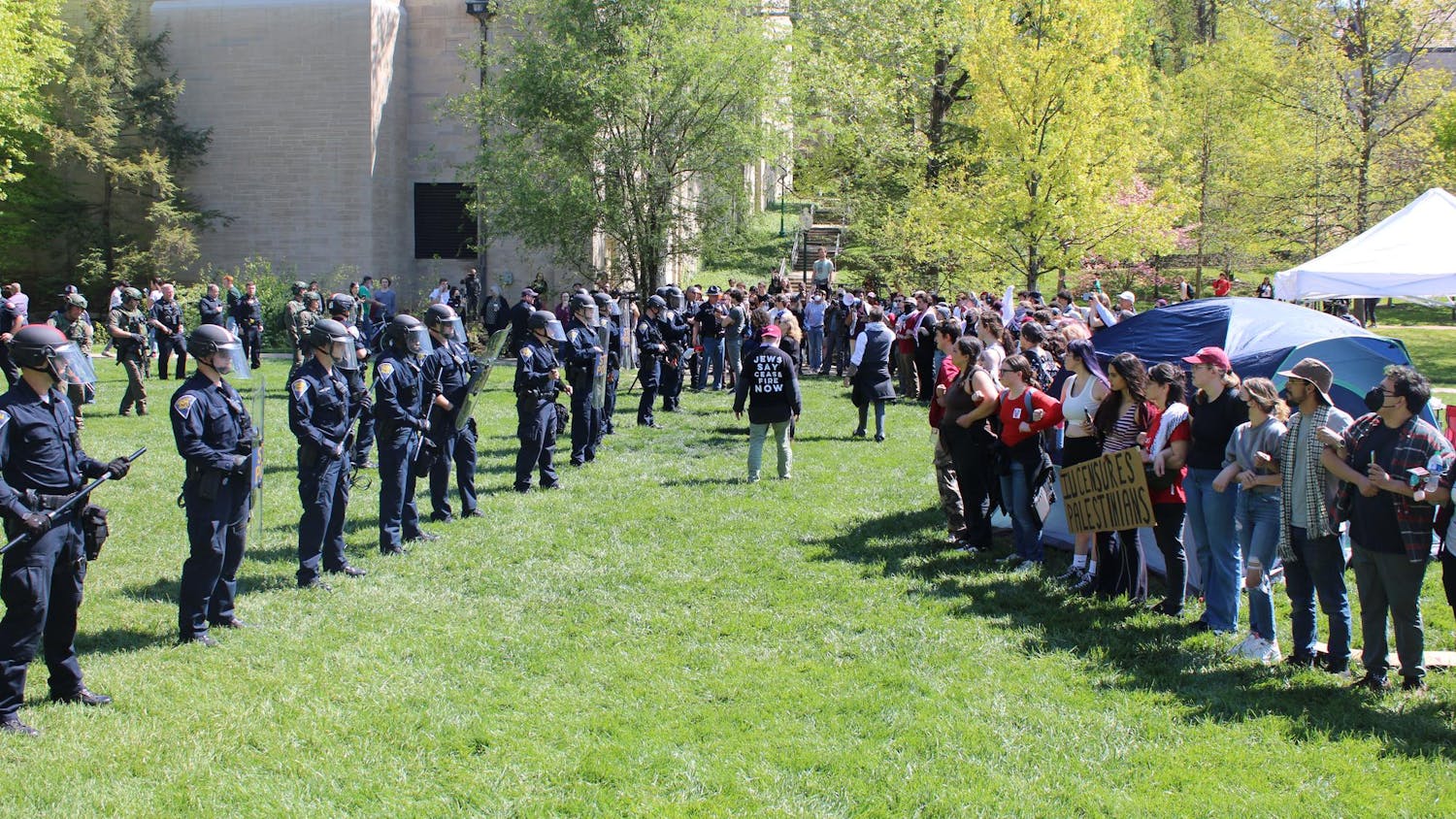The Indiana Memorial Union was quiet. A fire crackled in the South Lounge, where a few students studied in armchairs and sofas. Light conversation drifted from Starbucks. Facility workers rolled carts of supplies for an upcoming conference.
Then, a little past 9 p.m. Tuesday, powerful organ music broke through the background noises and filled the air.
Lucas Fletcher, a doctorate of musical arts student in the organ, began playing a Bach arrangement at the Webb-Ehrlich Great Organ of Alumni Hall. His black and gold Alton High School class ring flashed in the light as his fingers danced across the keys.
Fletcher said that the technical nature of organs like the one in Alumni Hall are what initially interested him in the instrument.
“I've always been interested in machines and that sort of thing, and the organ is a very mechanical instrument, especially one like this,” Fletcher said.
Unless students are lucky enough to be in the IMU when a student is at the organ, it may be difficult to notice the instrument. Situated in a balcony overlooking Alumni Hall, the face of the instrument is visible from below, but it is only accessible through a locked door that has a key code.
Patrick Fischer, curator of organs at the Jacobs School of Music, said that the instrument was dedicated in 2013 alongside renovations being made to Alumni Hall at the time.
The instrument was built in 1987 by C.B. Fisk for installation in the private home of Jacques M. Littlefield in Portola Valley, California. Its massive size allows it 2,838 individual pipes, according to Inside IU-Bloomington.
“It actually was kind of somewhat happenstance and a bunch of happy coincidences,” Fischer said. “Actually, very little modification was necessary to the instrument to make it work in that space.”
The instrument is not only technically but also visually complex. The 40-foot high facade of the organ includes many detailed flourishes in the woodwork, and each side features a life-size sculpture, one of a man and the other a woman, appearing to support the instrument above the sculptures' heads. The carving took two years for the woodworker, Morgan Faulds Pike, to complete, according to her website.
Fischer said commissioning an instrument of such scale and detail was incredibly rare during its 20th-century creation.
Fischer said that along with commissioning the organ, Littlefield was known for collecting helicopters, tanks and scud missiles. When Littlefield died, the C.B. Fisk company was searching for a new home for the organ. Fischer said the music school saw the organ as an important addition to its collection.
“Musically, the instrument is based on historic models,” Fischer said. “It fills a niche in terms of being able to really study certain types of organ literature that the other instruments on campus don't.”
Fischer said its location in Alumni Hall also makes the instrument more accessible to students walking through campus.
“The point of this instrument isn't just to serve the organ department or the Jacobs School of Music, but its location in Alumni Hall, which is sort of the crossroads of campus in the Union, would well place it for being heard by a different audience than the music school would have,” Fischer said.
Fischer also said that the organ is used in weddings, commencement exercises, luncheons and other events. However, it receives the most use from students studying the organ. Practice times are available overnight and throughout the day. However, because the space is shared with many other events in Alumni Hall, time can be limited, Fischer said.
Fletcher, who studied the organ at IU for his master’s degree and now his doctorate, said the organ’s placement is convenient, and the instrument is of incredibly high quality.
“It's more comfortable and feels better," Fletcher said. "There's a better physical interaction between performer and instrument. And, the quality of the sound it produces is better. You can combine things a little more freely. It's a more pleasing sound.”
Fletcher works on organ music from a wide variety of time periods and regions, but he said that the organ plays two European countries music the best.
“It's got a lot of different characteristics that make it really good for 17th, 18th and 19th century French music, but it also does German very well," Fletcher said. "Those are the two big categories that it's good at.”
Fischer said the Jacobs School does its best to host monthly concerts in Alumni Hall so students can experience the organ. The next one, a 45-minute Concerts at the Crossroads organ recital, will be at 12:15 p.m. Oct. 5.






